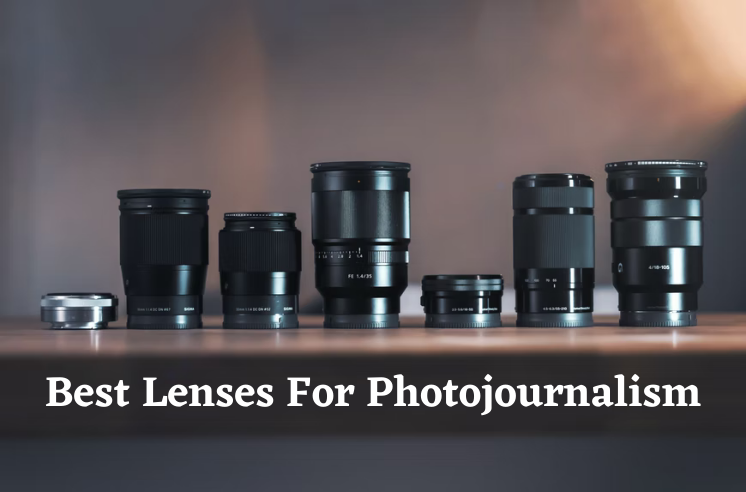The best lenses for photojournalism are long-term investments. For photojournalists, you should always focus on what kind of image do you want to create and how a wide-angle lens will affect it? What’s the distance of your subject from the lens? These questions and more make up the story of photographing a photojournalism piece. You’ll want to consider all the non-photography factors – the people involved are a huge part of those decisions. In this article, we’ll discuss the most important thing – lenses for photojournalism. We’ll also tell you what are considered the best lenses for photojournalism and why they’re great.
Top 10 Best Lenses For Photojournalism
Having a list of the best lenses for photojournalism at your disposal will make it much easier to come to terms with any situation you encounter while taking pictures. Nearly every photographer relies on a wide array of different lenses, not just to improve their picture quality, but also to help them overcome certain obstacles and take more dynamic images. Our ultimate guide will let you decide which lens is right for your needs and show you where to purchase the right lens.
1. Nikon AF-S NIKKOR 70-200mm Lens- Best Zoom Lens For Photojournalism
Main Features:
- F Mount Lens/FX Format
- Aperture Range: f/2.8 to 22
- Seven Extra-Low Dispersion Elements
- Nano Crystal & Super Integrated Coating
- Silent Wave Motor AF System
- Nikon VR II Image Stabilization
- Internal Focus; Manual Focus Override
- Weather-Sealed; Rubber Mount Seal
- Detachable, Rotatable Tripod Collar
- Rounded 9-Blade Diaphragm
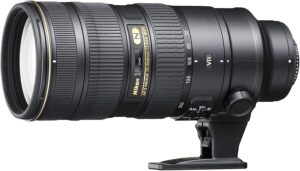
The AF-S 70-200mm f/2.8G E VR II Lens from Nikon is an impressive, versatile, and robust zoom lens for telephotos that features an aperture that is constant and fast which is useful in low-light conditions. A reliable lens that is used by professional photographers as well as amateurs, it is perfect for sports, photojournalism, and wildlife photography. It can be used for nearly all telephoto-related applications, not just portraiture. A lens that is FX-format can be mounted and used for DX-format DSLRs.
2. Canon EF 70-200mm F2.8L – Best Budget Zoom Lens
Main Features:
- EF-Mount Lens/Full-Frame Format
- Aperture Range: f/2.8 to f/32
- One Fluorite Element & Five UD Elements
- Air Sphere Coating
- Ring-Type Ultrasonic Motor AF System
- Optical Image Stabilizer
- Internal Focus, Focus Range Limiter
- Weather-Sealed Design, Fluorine Coating
- Detachable, Rotatable Tripod Collar
- Rounded 8-Blade Diaphragm
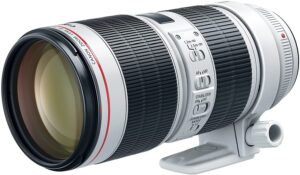
The most flexible lens on the market that is it is the EF 70-200mm f/2.8L IS III USM by Canon can be described as an L-series zoom that stands out by its bright and sophisticated optics. The lens is suitable for a variety of subjects, from sports to portraits, the speedy continuous f/2.8 maximum aperture performs well under difficult lighting conditions. It can also provide greater control over the field of view to separate subjects. The optical layout consists of a single fluorite element along with five UD elements that block color fringing and chromatic aberrations to achieve an excellent level of clarity across this zoom band.
3. Canon EF 16-35mm F2.8L – Best Wide Angle Zoom Lens For Photojournalism
Main Features:
- EF-Mount Lens/Full-Frame Format
- Aperture Range: f/2.8 to f/22
- Three Aspherical and Two UD Elements
- SWC, Air Sphere, and Fluorine Coatings
- Ring-Type Ultrasonic Motor AF System
- Weather-Sealed Construction
- Rounded 9-Blade Diaphragm
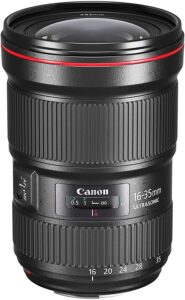
With a new design of the optical system, The EF 16-35mm f/2.8L III USM from Canon is a classic zoom that is wide-angle and part of the highly regarded L-series lenses. With a variety of specially-designed components, the lens uses three aspherical elements, and two extremely-low dispersion glass components to reduce a variety of aberrations, ensuring clear and sharp images. The two SWC, as well as ASC coatings, are added to the elements to help reduce the ghosting and flare of the lens to increase the quality and clarity of color.
4. Canon EF 100-400mm – Canon 100-400mm Lens Review
Main Features:
- EF-Mount Lens/Full-Frame Format
- Aperture Range: f/4.5 to f/38
- One Fluorite and One Super UD Element
- Air Sphere Coating
- Ring-Type Ultrasonic Motor AF System
- Optical Image Stabilizer
- Rotating Zoom Ring & Torque Adjustment
- Weather-Sealed Design, Fluorine Coating
- Detachable, Rotatable Tripod Collar
- Rounded 9-Blade Diaphragm
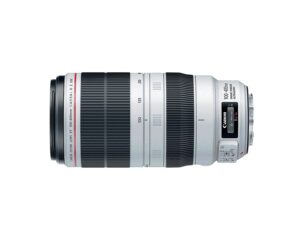
A telephoto zoom that is long-reaching and that is distinguished by an advanced optical design and sophisticated techniques for stabilizing images This lens Canon EF 100-400mm f/4.5-5.6L IS II USM Lens is part of the prestigious L-series designed for full-frame EOS DSLRs. One fluorite element, as well as the Super UD element, have been integrated into the lens’ design, and both are able to decrease distortions and aberrations across the zoom range to offer exceptional clarity, sharpness of images, and accurate color reproduction. Air Sphere Coating is also added to the lens elements to minimize ghosting and flare for better contrast-rich images. The optical elements in the lens. four-stop efficient Image Stabilizer assists in reducing any appearances of shake in the camera.
5. Sony FE 200-600mm F5.6-6.3 – Telephoto Zoom Lens For Photojournalism
Main Features:
- E-Mount Lens/Full-Frame Format
- Aperture Range: f/5.6 to f/36
- Five ED Elements, One Aspherical Element
- Nano AR Coating and Fluorine Coating
- Direct Drive Super Sonic Wave AF Motor
- Optical SteadyShot Image Stabilization
- Dust and Moisture-Resistant Construction
- Removable, Rotating Tripod Collar
- Rounded 11-Blade Diaphragm
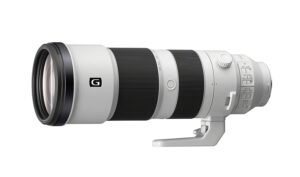
Offering a broad telephoto range with a broad telephoto range, this FE 200-600mm f/5.6-6.3 G OSS from Sony is a versatile zoom that is perfectly suitable for wildlife, nature, and sports. Its extended reach is paired with a moderate aperture for rendering to a light and portable design that makes it ideal for the handheld user. The optical design includes an array of high dispersion and aspherical components that block a range of color fringing and distortion to render images that are well-corrected with sharpness, high fidelity in color, and accurate rendering. Nano AR coating has been added to further minimize reflections on the surface and flare to improve contrast in bright and dim lighting.
6. Nikon AF-S NIKKOR 24-70mm f2.8E – Best Nikon Lens For Photojournalism
Main Features:
- F-Mount Lens/FX Format
- Aperture Range: f/2.8 to f/22
- ASP/ED, AS, ED, and HRI Elements
- Nano Crystal & Super Integrated Coatings
- Fluorine Coated Front and Rear Elements
- Silent Wave Motor AF System
- VR Image Stabilization
- Electromagnetic Diaphragm Mechanism
- Rounded 9-Blade Diaphragm
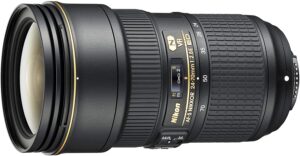
The traditional standard zoom is equipped with Vibration Reduction image stabilization. Nikon’s AF-S 24-70mm f/2.8E VR Lens is an incredibly flexible telephoto that ranges from short to wide-angle. lens, distinguished by its fixed f/2.8 maximum aperture as well as its electromagnetic aperture mechanism. The new optical design includes an aspherical extra-low dispersion element, along with three aspherical elements, two extra-low dispersion along with a refractive index high which helps reduce distortions and chromatic aberrations across the entire zoom range to ensure clarity and sharpness.
7. Nikon AF-S NIKKOR 300mm F2.8G Lens – Nikon 300mm F2.8 Review
Main Features:
- F-Mount Lens/FX Format
- Aperture Range: f/2.8 to f/22
- Three Extra-Low Dispersion Elements
- Nano Crystal & Super Integrated Coatings
- Silent Wave Motor AF System
- VR II Image Stabilization
- Detachable, Rotatable Tripod Collar
- Rounded 9-Blade Diaphragm
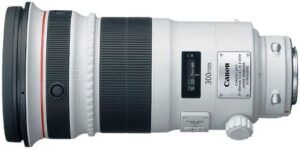
A super-telephoto that is distinguished by its sleek design and speed, the Nikon AF -S NIKKOR 300mm f/2.8G ED VR II is enhanced by its optical layout, speedy focus along image stabilization. It is ideal for wildlife and sports photography and wildlife photography, the large f/2.8 maximum aperture is suitable for working under a range of lighting conditions and encourages working with a narrow field of view and techniques for selective focus. The optical design is comprised of three elements with a low dispersion that helps reduce the effects of chromatic aberrations as well as color fringing for better clarity and precision in color. The Nano Crystal and Super Integrated Coatings have been used to decrease ghosting and flare to improve clarity and color rendering.
8. Nikon AF-S NIKKOR 80-400mm F/4.5-5.6G – Nikon 80-400mm Lens Review
Main Features:
- F-Mount Lens/FX Format
- Aperture Range: f/4.5 to f/40
- Four ED Elements, One Super ED Element
- Nano Crystal & Super Integrated Coatings
- Silent Wave Motor AF System
- VR Image Stabilization
- Detachable, Rotatable Tripod Collar
- Rounded 9-Blade Diaphragm
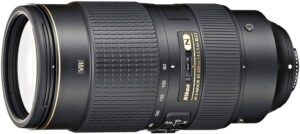
A synthesis of several telephotos within one compact zoom, the AF-S Nikon 80-400mm f/4.5-5.6G the ED VR lens by Nikon is a lens that can be used in a variety of ways, that covers super-telephoto to portrait lengths. With an advanced optics design, the lens utilizes one super-low dispersion element and four elements with extra-low dispersion to significantly lessen chromatic aberrations and coloring fringing across the zoom range to improve clarity. The two Nano Crystal and Super Integrated Coatings have been used to reduce ghosting and flare in order to improve the contrast and accuracy of colors in both backlit and bright conditions.
9. Canon EF 300mm F2.8L – Super Telephoto Lens for Photojournalism
Main Features:
- EF-Mount Lens/Full-Frame Format
- Aperture Range: f/2.8 to f/32
- Two Fluorite Elements
- Sub Wavelength Coating
- Ring-Type Ultrasonic Motor AF System
- Optical Image Stabilizer
- Power Focus, Focus Limiter, Focus Preset
- Weather-Sealed Construction
- Detachable, Rotatable Tripod Collar
- Rounded 9-Blade Diaphragm
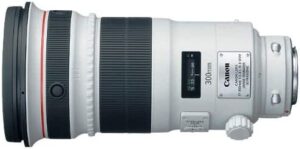
Flexible because of its mid-telephoto focal distance and high-quality aperture and bright maximum aperture, the Canon EF 300mm f/2.8L IS II USM is additionally distinguished by its speedy performance and quick handling that allows it to be used in a variety of conditions. As a lens of the L-series, this tele-prime comes with an advanced optical design. Two fluorite elements have been used to minimize color fringing and chromatic aberrations, ensuring excellent clarity and accuracy in color and the sub Wavelength coating is applied to specific elements to reduce ghosting and flare to increase contrast and neutrality in color when working under backlight conditions.
10. Sigma 24-105mm F4 Lens for Nikon – Sigma 24-105 Art Nikon Review
Main Features:
- F-Mount Lens/FX Format
- Aperture Range: f/4 to f/22
- Two FLD Elements, Two SLD Elements
- Three Aspherical Elements
- Super Multi-Layer Coating
- Hyper Sonic Motor AF System
- OS Image Stabilization
- Rounded 9-Blade Diaphragm
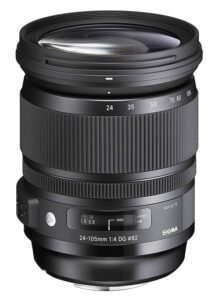
The ultimate in versatility This lens is the definition of versatility. Nikon F-mount 24-105mm F/4 DG OS HSM lens from Sigma has an Art series lens that covers an effective wide-angle range to the short-telephoto range. It has the same aperture of f/4 at all times it strikes the perfect balance between a compact appearance and a design that is bright enough to work in all lighting conditions. In addition, an optical Stabilizer aids in reducing any appearances of shake over the zoom range to ensure more precise handheld photography. A Hyper Sonic Motor also contributes to a smoother handling experience and offers particularly quiet and fast autofocus capabilities, along with full-time manual focus control.
In addition to the physical design, This lens is distinct by its superior optical layout, which comprises the use of low dispersion components and three aspherical lenses. These special elements minimize the spherical and chromatic aberrations across the zoom range to achieve a higher level of clarity and sharpness.
Frequently Ask Question(FAQ)
Q. What camera do photojournalists use?
In the realm of SLRs, we have tested and recommended two brands of cameras: Canon and Nikon. Both have a range of camera models at different prices. Many photographers will choose one of these brands, and both are widely regarded as top-quality in the photography business.
Q. What equipment do photojournalists use?
Its Airport Commuter can hold a photographer’s most essential equipment and be able to fit in the overhead of even the most compact planes, for example, a CRJ. A typical photojournalist’s setup comprises two cameras and a trio of lenses: 16-35mm f/2.8 and 24-70mm f/2.8 70-200mm f/2.8 as well as a strobe and other equipment.
Q. What is the focal length of photojournalism?
35mm is the most popular focal length used by many photojournalists or street photography.
Q. How do I become a photojournalist without a degree?
A degree in photojournalism isn’t required and the past of photojournalism demonstrates that many photographers achieved success without one. You can start out by becoming a self-taught photographer and attempt to become an experienced photographer.
Q. Can you get a masters in photojournalism?
Achieving the MA in photojournalism provides students with the opportunity to improve their artistic and technical abilities as well as develop proficiency in the art of journalism. The MA program is designed to equip students with the skills needed to create images and other media that have a real impact on journalism.
